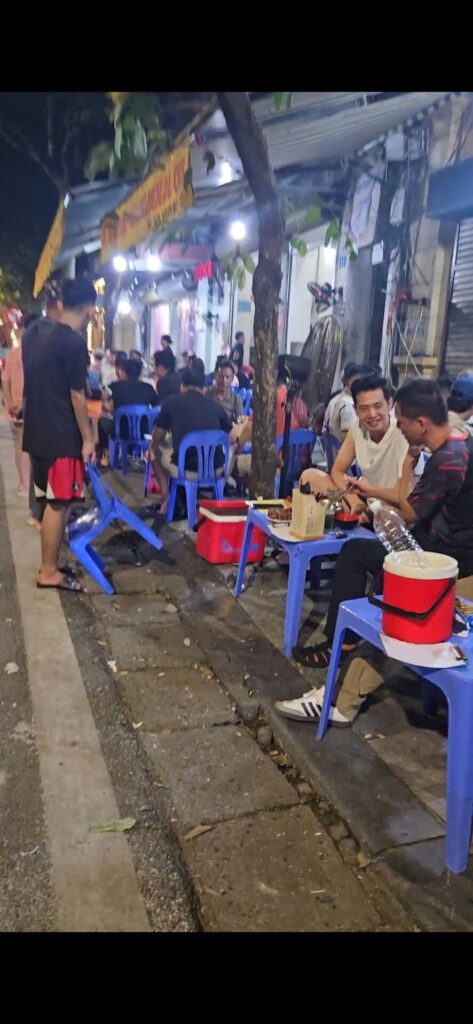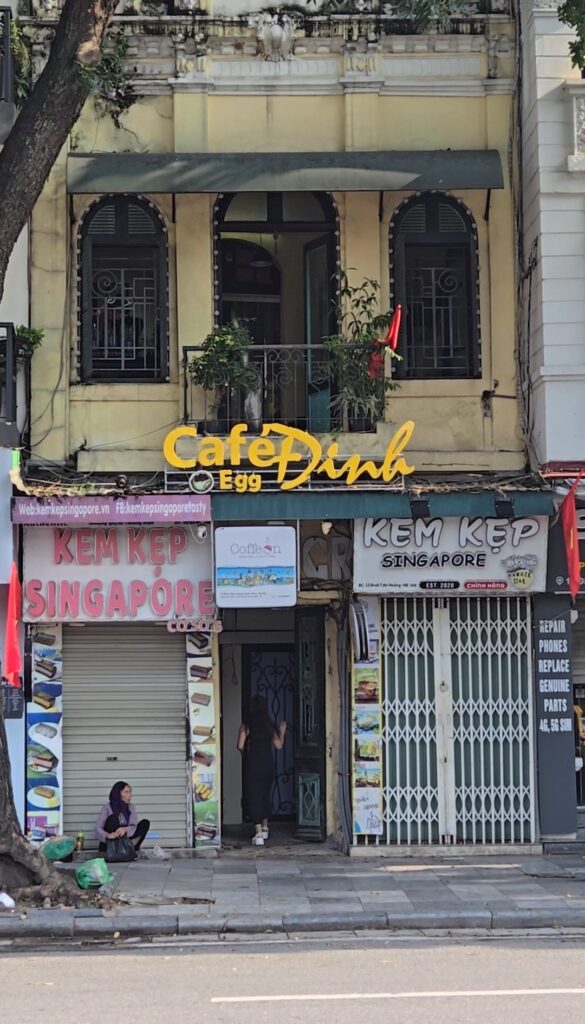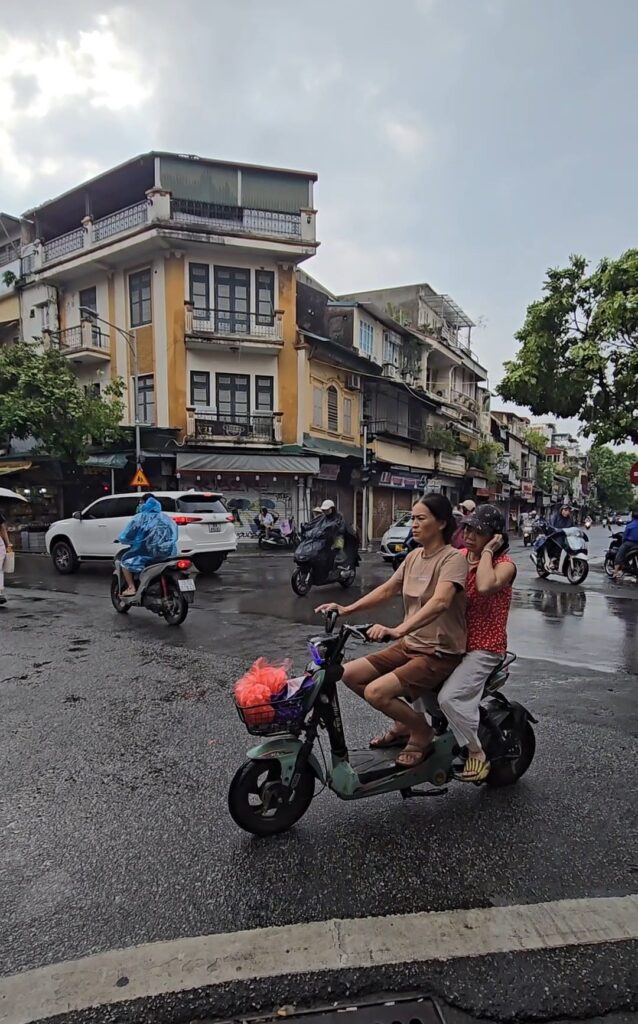The Old Quarter of Hanoi: A Vibrant Blend of Culture, Cuisine, and Chaos
Nestled in the heart of Vietnam’s capital city, Hanoi, the Old Quarter is a treasure trove of history, culture, and sensory overload. With its narrow streets, centuries-old architecture, and a unique mix of old-world charm and modern hustle, this neighborhood is a must-visit for anyone looking to experience authentic Hanoi.
Whether wandering through its chaotic markets, enjoying its delicious street food, or simply soaking in the vibrant atmosphere, the Old Quarter offers a unique experience.
In this blog post, we’ll explore some of the Old Quarter’s most popular attractions, tempt your taste buds with the area’s iconic foods, and help you navigate the bustling streets with tips on what to expect regarding crowds, traffic, and local conditions. Plus, we’ll glimpse the heart and soul of the people who call this historic neighborhood home.

A Stroll Through History: Popular Attractions in the Old Quarter
Hanoi’s Old Quarter is a labyrinth of 36 ancient streets, each named after the trade or craft that once dominated the area, such as Hang Bac (Silver Street) or Hang Gai (Silk Street). Exploring this area is like stepping back in time. Here are some must-see attractions that capture the essence of the Old Quarter:
Hoan Kiem Lake and Ngoc Son Temple
The beating heart of the Old Quarter, Hoan Kiem Lake, is both a peaceful oasis and a community hub of activity. Locals and tourists flock here to walk around the lake’s edge, practice tai chi, or relax on one of the many benches. In the center of the lake lies the Turtle Tower, symbolizing Hanoi’s history and legend.
And don’t be surprised if you’re walking around the lake on a Saturday or Sunday and children approach you with their parents wanting to ask you questions. That’s because they study English and want to practice with native English speakers. I’ve had this happen in a few countries.

Adjacent to the lake is the Ngoc Son Temple, located on a small island and accessible by the charming red Huc Bridge. The temple is dedicated to General Tran Hung Dao, a revered military leader, and it offers insight into Vietnam’s cultural heritage.
Dong Xuan Market
A visit to the Old Quarter would only be complete with a trip to Dong Xuan Market, the largest indoor market in Hanoi. Starting in 1889, this bustling bazaar offers an array of goods. From fresh produce to clothing, souvenirs, and electronics. For a glimpse into local life, this is the place to go. And be prepared to haggle—it’s part of the shopping experience here.
Although it’s a popular market, most tourists can find what they’re looking for at the many stalls littered across Hanoi. And if you’re interested in shopping or souvenir hunting, there’s also the night market, which extends for blocks and is filled with shops selling almost anything you could think of.
The Ancient House on Ma May Street
Step into the past by visiting the Ancient House, a beautifully preserved example of traditional Vietnamese architecture. Located on Ma May Street, this house shows visitors how wealthy families lived centuries ago. The house has been carefully restored and is a peaceful retreat from the busy streets outside, showcasing traditional Vietnamese decor and design.
St. Joseph’s Cathedral
St. Joseph’s Cathedral is a stunning example of French colonial architecture that reminds Hanoi of its diverse cultural and religious history. Built in the late 19th century, this Gothic-style cathedral is a popular landmark in the Old Quarter. Its spires and stained-glass windows make it an impressive sight.
Bach Ma Temple
One of the oldest temples in Hanoi, Bach Ma Temple, is dedicated to the white horse that, according to legend, guided King Ly Thai To to the site where he would establish the city’s citadel. The temple is a serene and spiritual place in the middle of the hustle and bustle and offers a tranquil retreat for worshipers.
A Culinary Wonderland: Popular Foods in the Old Quarter
Hanoi’s Old Quarter is a paradise for food lovers. Whether you’re into street food or looking for a more formal dining experience, the area has something to satisfy every palate. Here are some iconic dishes you can’t miss:
Pho Bo (Beef Noodle Soup)
No visit to Hanoi is complete without tasting its most famous dish—Pho. Pho Bo, or beef noodle soup, is a bowl of flat rice noodles, thin beef slices, and a rich broth, typically served with fresh herbs, lime, and chili.
Many locals start their day with a steaming bowl of Pho, and in the Old Quarter, you’ll find plenty of street vendors and food stalls serving this dish. Because I have an aversion to beef because of gout, I can’t testify for the beef Pho. But the chicken Pho is delicious.
Banh Mi
A legacy of French colonialism, banh mi is Vietnam’s take on the classic baguette sandwich. It is stuffed with a variety of fillings, including beef, chicken, vegetables, and sauce. This portable meal is perfect for travelers on the go. The Old Quarter is full of small stalls where you can grab a banh mi and continue exploring the neighborhood.
One of the most popular places is Banh Mi 25. I’ve eaten here a few times and can recommend it. If you check them out on Tripadvisor.com, you will see that they have thousands of great reviews.
Egg Coffee (Ca Phe Trung)
For something unique to Hanoi, try the city’s famous egg coffee. This decadent recipe consists of strong Vietnamese coffee topped with a whipped mixture of egg yolks and sugar. You can order it both hot or cold. While it might sound unusual, it’s a local delicacy you shouldn’t pass up.
I enjoyed drinking a cup where it was first said to be invented. The coffee house is right across from Hoen Kiem Lake. The sign for the coffee house is pictured below.

Cha Ca La Vong
This dish is so iconic that it even has a street named after it! Although I have never tried it, I can tell you that Cha Ca is grilled fish seasoned with turmeric and dill, served sizzling at the table alongside rice noodles, peanuts, fresh herbs, and dipping sauce. From what I’m told, it’s a dish often enjoyed communally, with diners adding their garnishes and flavorings.
Navigating the Chaos: Crowds, Traffic, and Conditions
One of the first things that strikes visitors to Hanoi’s Old Quarter is the sheer intensity of the place. The streets are narrow and packed with motorbikes, cars, bicycles, and pedestrians. The air is filled with the sounds of street vendors hawking their goods and the general hum of activity that never seems to stop.
Crowds
The Old Quarter is one of Hanoi’s busiest areas, especially during peak tourist seasons (September to April). Streets can become incredibly crowded, particularly around famous landmarks like Hoan Kiem Lake and Dong Xuan Market.
If you enjoy peace, this might be overwhelming, but it’s also part of the Old Quarter’s charm. In fact, I would say it’s hard to find a quiet place outside in the Old Quarter.
Traffic
Traffic in the Old Quarter can seem like pure chaos to a first-time visitor. Motorbikes zip in and out of every possible space, often ignoring traditional traffic signals. Pedestrians share the narrow roads with vehicles, and crossing the street can feel like a daring feat.
And that’s because the traffic does not stop. You cross the roads by walking into the traffic and letting the scooters and cars weave around you. It works well in Vietnam. The best way to describe it is as organized chaos, but after a few days, you’ll embrace its rhythm.

Weather and Conditions
Hanoi experiences a tropical climate, which means hot, humid, and sticky summers, with temperatures often soaring above the 80s and 90s from May to September, with more excellent, drier winters from November to February.
The monsoon season, from May to October, can bring heavy rains, so be sure to be prepared if you visit during this time. Despite the sometimes challenging conditions, the Old Quarter’s lively spirit persists year-round.
This past month, Vietnam experienced a massive typhoon that uprooted decades-old trees and damaged critical infrastructure. One shop employee told me almost every shop had water in its store, and the streets became raging rivers as the typhoon passed through Hanoi.
The Heart of the People: Hospitality and Culture
What truly makes the Old Quarter unique, aside from its historical landmarks and excellent cuisine, is the warmth, resilience, and charm of its people. The locals here are deeply rooted in tradition but adaptable to the changes brought by tourism and modernization.
Friendly and Hospitable
Despite the fast-paced nature of life in the Old Quarter, I have found that the people here are known for their hospitality and warmth. Whether you’re asking for directions, haggling in the market, or enjoying a meal at a local restaurant, don’t be surprised if you’re met with a friendly smile or an offer to help.
Many local shop owners and street vendors speak little English, but they’re often willing to make friendly gestures to ensure you find what you need. I can’t say enough good things about the warmth and kindness of the Vietnamese people.
Community Spirit
One thing I noticed firsthand is that there is a strong sense of community in the Old Quarter. Neighbors know each other, and generations of families have lived and worked in the same areas for decades. In the early morning, especially on weekends, you’ll see groups of elderly residents practicing tai chi by Hoan Kiem Lake.
At the same time, you’ll see street vendors setting up their stalls and preparing for the day. This way of life has persisted despite Hanoi’s rapid development.
Resourceful and Resilient
Life in the Old Quarter can be challenging. The streets are crowded, space is limited, and the demands of modern life clash with traditional ways of doing things. Yet the people of Hanoi are nothing if not resourceful. Street vendors balance impossibly large baskets of goods on their shoulders, motorbike riders deftly navigate packed roads, and small businesses thrive despite tight quarters.
As you can tell, Hanoi’s Old Quarter is a vibrant mix of history, culture, cuisine, and chaos that leaves a lasting impression on visitors. Its bustling streets, centuries-old landmarks, and iconic food offerings create a sensory experience.
Whether exploring ancient temples, navigating the organized chaos of traffic, or savoring street food delicacies like pho and banh mi, this neighborhood offers a window into the heart and soul of Hanoi. Its people’s warmth, resilience, and hospitality only add to the Old Quarter’s charm, making it a must-visit destination for anyone seeking an authentic taste of Vietnam.
Enjoying Vietnam,
Joseph O’Brien
